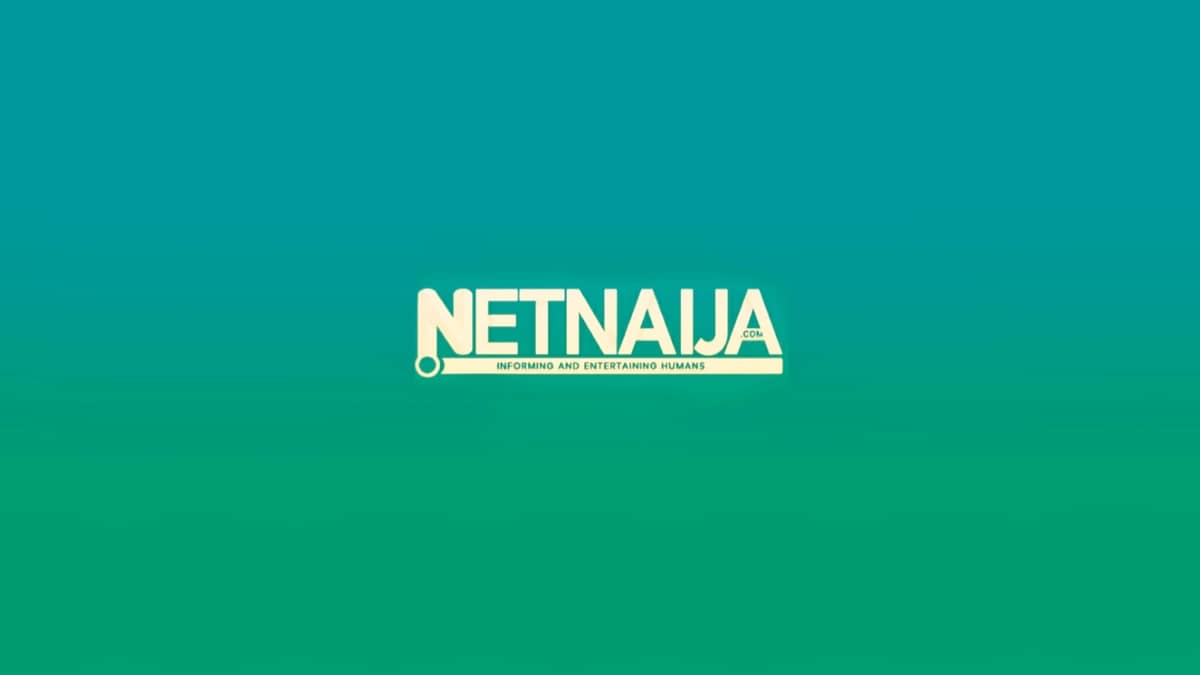News
The Top Vulnerabilities in IoT Devices: What Hackers Target and How to Defend Against Them

Introduction
The Internet of Things (IoT) has revolutionized the way we interact with technology, seamlessly integrating smart devices into our daily routines. From smart thermostats and wearable fitness trackers to home security cameras and voice assistants, IoT devices offer unparalleled convenience and connectivity. However, their rapid proliferation and extensive network connectivity also present significant security challenges. As more devices become interconnected, they create a broader attack surface for cybercriminals. This article aims to delve into the most common security vulnerabilities found in IoT devices, examining how these weaknesses can be exploited by hackers. Furthermore, it will provide practical strategies to defend against these risks, ensuring that your IoT ecosystem remains secure. Understanding these vulnerabilities and implementing effective defences is crucial for safeguarding personal and organizational data in an increasingly connected world.
What are IoT Devices?
IoT devices are interconnected objects that communicate over the internet, allowing them to send and receive data to and from other devices. These devices range from everyday items like smart thermostats and security cameras to advanced wearable technology such as fitness trackers and smartwatches. By integrating sensors, software, and network connectivity, IoT devices enhance functionality and user convenience. For example, a smart thermostat adjusts home temperatures based on real-time data and user preferences, while a security camera offers remote monitoring capabilities for enhanced safety.
In modern life, IoT devices play a crucial role in both personal and professional settings. They streamline everyday tasks, improve efficiency, and provide valuable insights through data collection and analysis. In personal settings, IoT devices contribute to home automation, energy management, and health monitoring. Professionally, they facilitate enhanced operational efficiency, predictive maintenance, and smarter decision-making. The pervasive adoption of IoT technology is reshaping industries by offering innovative solutions and creating new opportunities for businesses and individuals alike. However, as their influence grows, addressing the associated security challenges becomes increasingly essential to ensure their benefits are fully realized without compromising safety.
Common Vulnerabilities in IoT Devices
- Weak or Default Passwords: Many IoT devices come with weak or default passwords, such as “admin” or “123456,” which are rarely changed by users. This vulnerability allows attackers to easily gain unauthorized access, compromising the device and potentially the entire network it is connected to. These default credentials are often publicly known and exploited in automated attacks, leading to breaches that can affect both personal and organizational security.
- Lack of Encryption: Insufficient data encryption is another significant vulnerability in IoT devices. Without robust encryption, data transmitted between devices or from a device to the cloud can be intercepted and accessed by unauthorized parties. This lack of encryption exposes sensitive information, such as personal details or operational data, to tampering and theft, compromising user privacy and security.
- Insecure Communication Protocols: Insecure communication protocols also pose a major risk. Many IoT devices use outdated or poorly secured protocols for data transmission, which can be intercepted by attackers. These unprotected communication channels allow cybercriminals to eavesdrop on or manipulate data, potentially leading to unauthorized control of the device or leakage of sensitive information.
- Outdated Firmware and Software: Outdated firmware and software contribute to security vulnerabilities by leaving known flaws unpatched. Manufacturers may not regularly update their devices, leading to unaddressed security issues. This neglect creates opportunities for attackers to exploit these vulnerabilities, gaining control over the device or leveraging it as a gateway to other parts of the network.
- Insecure Interfaces: Insecure web and mobile interfaces are another point of attack. Many IoT devices are controlled through apps or web interfaces that may lack proper security measures. Attackers can exploit weaknesses in these interfaces to gain unauthorized access, control the device, or disrupt its functionality. Poorly designed interfaces can thus serve as gateways for broader cyberattacks, undermining device security and user safety.
Exploitation of IoT Vulnerabilities
The exploitation of IoT vulnerabilities can have significant and far-reaching consequences. One major method attackers use is the creation of botnets, which are networks of compromised devices controlled remotely by cybercriminals. By exploiting vulnerabilities in IoT devices—such as weak passwords or outdated firmware—attackers can hijack these devices and enlist them into a botnet. Once in control, the botnet can be used to launch distributed denial-of-service (DDoS) attacks, overwhelming targeted websites or online services with traffic and causing them to become inaccessible (as shown in fig. 2). Such attacks can disrupt business operations, damage reputations, and incur substantial financial losses.
Another critical risk is data theft and privacy breaches. Many IoT devices collect and transmit sensitive personal or business data, including health metrics, financial information, or proprietary business information. When these devices lack proper encryption or have insecure communication protocols, attackers can intercept and access this data.
For instance, a compromised smart home security camera might reveal private footage, or a hacked wearable fitness tracker might expose health records. The theft or manipulation of such data not only violates privacy but can also be used for identity theft, financial fraud, or corporate espionage. Also, exploited vulnerabilities can lead to unauthorized control of IoT devices. Attackers gaining control over a smart thermostat could disrupt heating or cooling, while compromised industrial IoT systems could lead to operational failures or even safety hazards. This unauthorized control can be used to cause physical damage, disrupt operations, or manipulate critical systems, posing severe risks to both individuals and organizations.
Strategies for Defending Against IoT Vulnerabilities
Defending against IoT vulnerabilities requires a proactive and multi-layered approach to ensure the security and integrity of connected devices. Implementing strong security practices can significantly mitigate the risks associated with IoT devices.
Change Default Passwords: One of the most fundamental steps is to change default passwords. Many IoT devices come with factory-set passwords that are often weak and widely known. These default credentials can easily be exploited by attackers if not changed. Users should create strong, unique passwords for each device, incorporating a mix of letters, numbers, and special characters. This practice prevents unauthorized access and enhances the overall security of the IoT network. It is crucial for both individuals and organizations to establish password policies and enforce regular password changes to maintain device security.
Implement Encryption: Implementing strong encryption is another vital strategy. Encryption protects data by converting it into an unreadable format that can only be deciphered with the correct decryption key. For IoT devices, it is essential to use robust encryption protocols for data in transit and at rest. This means ensuring that all data transmitted between devices, as well as stored data, is encrypted to prevent interception and unauthorized access. Encryption helps safeguard sensitive information such as personal data, operational details, and business intelligence, reducing the risk of data breaches and privacy violations.
Regular Software Updates and Patches: Regular software updates and patches are crucial for addressing known vulnerabilities. IoT device manufacturers periodically release updates to fix security flaws and improve functionality. Users should regularly check for and install these updates to ensure that their devices are protected against newly discovered threats. Outdated firmware and software can be exploited by attackers to gain unauthorized access or disrupt device operations. By keeping devices up to date, users can benefit from the latest security enhancements and minimize the risk of exploitation.
Secure Communication Protocols: Secure communication protocols are also essential in protecting IoT devices. Many devices use communication protocols that may not be adequately protected. Implementing secure protocols, such as Transport Layer Security (TLS) or Secure Socket Layer (SSL), ensures that data exchanged between devices and servers is encrypted and protected from eavesdropping or tampering. Users should verify that their IoT devices support modern security standards and employ protocols that offer robust protection against potential attacks.
Device and Network Segmentation: Device and network segmentation is a strategic approach to limiting the impact of potential breaches. By isolating IoT devices on separate networks from critical systems and data, users can contain any security incidents that may occur. For example, creating a separate network for IoT devices, distinct from the main business network, helps prevent a compromised device from affecting other sensitive areas. Additionally, network segmentation can help manage and monitor device traffic more effectively, making it easier to detect and respond to suspicious activities.
Let me leave you with this final note
IoT devices, while offering substantial benefits through their connectivity and automation capabilities, present significant security vulnerabilities that need to be addressed. Common issues include weak or default passwords, lack of encryption, insecure communication protocols, outdated firmware, and insecure interfaces. These vulnerabilities can lead to serious consequences, such as unauthorized access, data breaches, and operational disruptions.
To effectively defend against these risks, adopting a proactive approach is crucial. Changing default passwords to strong, unique ones is a fundamental step in preventing unauthorized access. Implementing robust encryption for data both in transit and at rest ensures that sensitive information remains protected from interception and tampering. Regularly updating firmware and software is essential to patch known vulnerabilities and mitigate security risks. Using secure communication protocols, such as TLS or SSL, helps protect data exchanges between devices. Finally, segmenting devices and networks limits the potential impact of breaches by isolating IoT devices from critical systems.
Authors Name: Ahmed Olabisi Olajide (Co-founder Eybrids)
LinkedIn: Olabisi Olajide | LinkedIn
Headlines
Noble Ladies Champion Women’s Financial Independence at Grand Inauguration in Abuja

Women from diverse backgrounds across Nigeria and beyond gathered at the Art and Culture Auditorium, Abuja, for the inauguration and convention of the Noble Ladies Association. The event, led by the association’s Founder and “visionary and polished Queen Mother,” Mrs. Margaret Chigozie Mkpuma, was a colourful display of feminine elegance, empowerment, and ambition.
The highly anticipated gathering, attended by over 700 members and counting, reflected the association’s mission to help women realise their potential while shifting mindsets away from dependency and over-glamorization of the ‘white collar job.’ According to the group, progress can be better achieved through innovation and creativity. “When a woman is able to earn and blossom on her own she has no reason to look at herself as a second fiddle,” the association stated.
One of the association’s standout initiatives is its women-only investment platform, which currently offers a minimum entry of ₦100,000 with a return of ₦130,000 over 30 days—an interest rate of 30 percent. Some members invest as much as ₦1 million, enjoying the same return rate. Mrs. Mkpuma explained that the scheme focuses on women because “women bear the greater brunt of poverty” and the platform seeks “to offer equity in the absence of economic equality.”
Education is also central to the Noble Ladies’ mission, regardless of age. Their mantra, “start again from where you stopped,” encourages women to return to school or upgrade their skills at any stage in life. The association believes that financial stability is vital in protecting women from cultural practices that dispossess widows of their late husbands’ assets, while also enabling them to raise morally and socially grounded families.
Founded on the vision of enhancing women’s skills and achieving financial stability, the association rests on a value system that discourages pity and promotes purpose. “You have a purpose and you build on that purpose to achieve great potentials and emancipation,” Mrs. Mkpuma said.
A criminologist by training and entrepreneur by practice, she cautions against idleness while waiting for formal employment. “There are billions in the informal and non-formal sectors waiting to be made,” she said, rejecting the “new normal of begging” and urging people to “be more introspective to find their purpose in life and hold on to it.”
Mrs. Mkpuma’s management style keeps members actively engaged, focusing on vocational skills and training to prepare them for competitive markets. She is exploring “innovative integration of uncommon technologies” and is already in talks with international franchises to invest in Nigeria, with Noble Ladies as first beneficiaries.
The association’s core values include mutual respect, innovation, forward-thinking, equal opportunity, and financial emancipation. With plans underway to establish a secretariat in the heart of Abuja, the group aims to expand its impact.
The event drew high-profile guests, including former Inspector General of Police, Mike Okiro, and a host of VIPs, marking a significant milestone in the association’s drive for women’s empowerment.
Headlines
NEPZA, FCT agree to create world-class FTZ environment

The Nigeria Export Processing Zones Authority (NEPZA) has stepped in to resolve the dispute between the Federal Capital Territory Administration and the Abuja Technology Village (ATV), a licensed Free Trade Zone, over the potential revocation of the zone’s land title.
Dr. Olufemi Ogunyemi, the Managing Director of NEPZA, urged ATV operators and investors to withdraw the lawsuit filed against the FCT administration immediately to facilitate a roundtable negotiation.
Dr. Ogunyemi delivered the charge during a courtesy visit to the Minister of the Federal Capital Territory, Barrister Nyesom Wike, on Thursday in Abuja.
You will recall that the ATV operators responded to the revocation notice issued by the FCT administration with a lawsuit.
Dr. Ogunyemi stated that the continued support for the growth of the Free Trade Zones Scheme would benefit the nation’s economy and the FCT’s development, emphasizing that the FCT administration recognized the scheme’s potential to accelerate industrialisation.
Dr. Ogunyemi, also the Chief Executive Officer of NEPZA, expressed his delight at the steps taken by the FCT minister to expand the economic frontier of the FCT through the proposed Abuja City Walk (ACW) project.
Dr. Ogunyemi further explained that the Authority was preparing to assess all the 63 licensed Free Trade Zones across the country with the view to vetting their functionality and contributions to the nation’s Foreign Direct Investment and export drives.
“I have come to discuss with His Excellency, the Minister of the Federal Capital Territory on the importance of supporting the ATV to succeed while also promoting the development of the Abuja City Walk project. We must work together to achieve this for the good of our nation,” he said.
On his part, the FCT Minister reiterated his unflinching determination to work towards President Bola Ahmed Tinubu’s Renewed Hope Agenda by bringing FDI to the FCT.
“We must fulfil Mr. President’s promises regarding industrialization, trade, and investment. In this context, the FCT will collaborate with NEPZA to review the future of ATV, a zone that was sponsored and supported by the FCT administration,” Wike said.
Barrister Wike also said that efforts were underway to fast-track the industrialisation process of the territory with the construction of the Abuja City Walk.
The minister further said the Abuja City Walk project was planned to cover over 200 hectares in the Abuja Technology Village corridor along Airport Road.
According to him, the business ecosystem aimed to create a lively, mixed-use urban center with residential, commercial, retail, hospitality, medical, and institutional facilities.
He added that the ACW would turn out to be a high-definition and world-class project that would give this administration’s Renewed Hope Agenda true meaning in the North-Central Region of the country.
Barrister Wike also indicated his continued pursuit of land and property owners who failed to fulfil their obligations to the FCT in his determination to develop the territory.
Headlines
Benue IDPs block highway, demand return to ancestral homes

Vehicular movement along the Yelwata axis of the Benue–Nasarawa highway was brought to a standstill on Wednesday as Internally Displaced Persons, IDPs, staged a protest, demanding immediate return to their ancestral homes.
The protesters, believed to be victims of persistent attacks by suspected herdsmen, blocked both lanes of the busy highway for several hours, chanting “We want to go back home”.
The protest caused disruption, leaving hundreds of motorists and passengers stranded.
Eyewitnesses said the displaced persons, many of whom have spent years in overcrowded IDP camps, are expressing deep frustration over the government’s delay in restoring security to their communities.
“We have suffered enough. We want to return to our homes and farms,” one of the protesters told reporters at the scene.
Security personnel were reportedly deployed to monitor the situation and prevent any escalation, though tensions remained high as of press time.
Efforts to reach the Benue State Emergency Management Agency, SEMA, and other relevant authorities for comment were unsuccessful.
-

 Headlines4 years ago
Headlines4 years agoFacebook, Instagram Temporarily Allow Posts on Ukraine War Calling for Violence Against Invading Russians or Putin’s Death
-

 Headlines4 years ago
Headlines4 years agoNigeria, Other West African Countries Facing Worst Food Crisis in 10 Years, Aid Groups Say
-

 Foreign4 years ago
Foreign4 years agoNew York Consulate installs machines for 10-year passport
-

 News1 year ago
News1 year agoZero Trust Architecture in a Remote World: Securing the New Normal
-

 Entertainment3 years ago
Entertainment3 years agoPhyna emerges winner of Big Brother Naija Season 7
-

 Headlines2 years ago
Headlines2 years agoNigeria Customs modernisation project to check extortion of traders
-

 Entertainment2 years ago
Entertainment2 years agoMovie download platform, Netnaija, announces closure
-

 Economy2 years ago
Economy2 years agoWe generated N30.2 bn revenue in three months – Kano NCS Comptroller







